THE REPUBLIC OF Uzbekistan
Uzbekistan is a doubly landlocked country[1] in Central Asia. It lies at the heart of Asia, between the Amu Derya and SyrDerya Rivers. With an area of 414,240 km2, it stretches 1,425 km from west to east and 930 km from north to south. It is bordered by Afghanistan in the South, Turkmenistan in the west, Kazakhstan in the north, and Tajikistan and Kyrgyz Republic in the east. It is not only one of the largest Central Asian countries but also the only Central Asian country to border all of the other four. It is the 56th largest country in the world and the 5th among the Commonwealth of Independent States (CIS) countries by area. The physical environment of Uzbekistan is diverse, ranging from the flat, desert topography that comprises almost 80% of the country’s territory to mountain peaks in the east reaching about 4,500 meters above sea level. Uzbekistan’s central region consists mostly of a desert broken by the oases of the Zarafshan and Sukhandarye rivers. The eastern part of the country is mostly mid-latitude desert and semiarid grassland. Uzbekistan has a severe continental climate, dry and hot in summer and cool and wet in winter with little precipitation expected annually (100–200 millimeters, or 3.9–7.9 inches). The average summer high temperature tends to be 40 °C (104 °F), while the average winter low temperature is around −23 °C (−9 °F).
[1] A landlocked country surrounded only by other landlocked countries is called a “doubly landlocked” country.

THE REPUBLIC OF Uzbekistan

Language
Uzbek

Currency
Soum

GDP
101591769702.343 US$ (2023)

GDP per capita
2849.51461071911 US$ (2023)

Exports of goods and services
24066920244.3608 US$ (2023)

Imports of goods and services
41335132987.3415 US$ (2023)

Chambers Names
Chamber of Commerce and Industry of the Republic of Uzbekistan

Capital
Tashkent

Surface area (sq. km)
448900

Population, total
35652307 (2023)

Source of Data
Portal of Interactive State Services – Uzbekistan – World Bank






